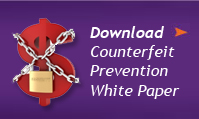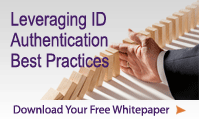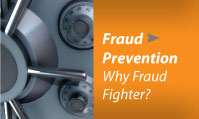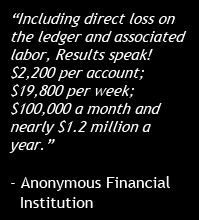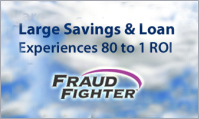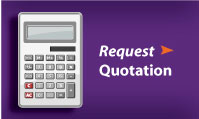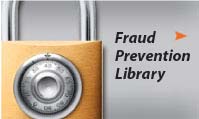
-
Banking Case Study
Fraud Prevention Snapshot: Wells Fargo Stops Counterfeit Fraud
Summary:
Retail bank locations are plagued by exposure to fraudulent transactions involving counterfeit money, fake I.D.’s, counterfeit checks, and other issues involving counterfeit documents presented at the time of transaction at the teller–window, loan area and new accounts desks.
Fraud Fighter, a division of UVeritech, has aided many banks to prevent fraud. Wells Fargo saw the Fraud–Fighter model UV–16 as the perfect, low cost tool to help resolve the significant losses they were experiencing because of counterfeit activity in their bank branches. The bank initiated a limited trial program using the Model UV–16 in a small number of branch locations and tracked the results closely. To their surprise, the minimal investment required to purchase the 100 UV–16 units used during the trial produced phenomenal results - sufficient to “fast track” the decision to adopt the use of the UV–16 on a national basis in their branches.
Bank Fraud: Exposure is everything
Every aspect of a retail bank’s operations is exposed to counterfeit fraud. Criminals use false I.D. documents with stolen identities to open money–laundering bank accounts, and to fraudulently apply for credit. At the teller window, banks are unprotected against losses resulting from counterfeit money and fraudulent checks. With the recent advent of advanced digital scanning and printing equipment, this exposure can only be amplified. Now, just about any person with a PC and a printer can produce highly accurate counterfeits of most of the items being presented at the bank branch.
As a result of increased counterfeit activity, bank employees must now be concerned with I.D. verification, counterfeit money, fake checks, counterfeit traveler checks, false cashier’s checks and money orders, counterfeit credit cards with “skimmed” account information, foreign I.D. documents – such as the Matricula Consular and foreign passports – and a host of other negotiable instruments and identification documents.
Every employee in a retail bank branch needs to become a loss prevention “expert” in order to help protect the bank from these losses.
-
Innovation can stop crime – Counterfeit Detection Scanners:
In the banking industry, counterfeit detection has been a “back office” activity, if conducted at all. Deposits were scanned at the end of the day with large, expensive industrial bill counting and counterfeit detection equipment. Often, due to the high cost of the equipment, this task was delegated to a central money–handling center responsible for a large number of branches, sometimes days or even weeks after the deposit had been received.Fraud fighter, a division of UVeritech saw a major flaw in this system. What value is it to the bank to discover hours, or even days, after the transaction that they have received counterfeit items? It made immediate sense to present the Fraud Fighter counterfeit detectors to the largest banks in the United States.
Conclusion - Industry Challenge Instantly Stopped Fraud at Point of Transaction:
The first major U.S. bank to accept this challenge was Wells Fargo. With over 3,000 retail branches in 23 different states, Wells Fargo is the fifth largest bank in the U.S., ranked by assets. Intrigued by UVeritech’s challenge, the forward–looking management team at Wells Fargo decided to proceed with a limited–scale pilot program - placing 100 units of the Model UV–16 into a small number of branches.
The branches were distributed over several states, and each branch manager was carefully instructed regarding how to conduct the trials. The branch tellers immediately responded favorably, saying the machines are simple and easy to use.
Within 30 days, the losses prevented by the UV–16 counterfeit detector totaled more than $200,000. These losses consisted of fraudulent loans, counterfeit money, and other counterfeit instruments. Based on the cost of the 100 trial units, the results provided a greater than 2000% return–on–investment in 30 days. The bank management decided in a very short time to initiate a rollout of the UV–16 into their branch locations on a national basis.
Bank of America, Citibank, Bank One and JP Morgan–Chase followed suit. Today, the UV–16 “teller–helper” is endorsed by more than 13 state banking associations around the country, and can be seen in banks of all sizes.




